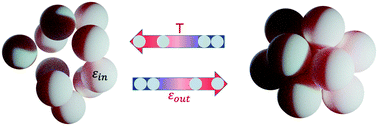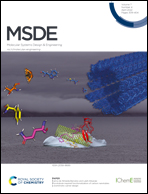Active learning of polarizable nanoparticle phase diagrams for the guided design of triggerable self-assembling superlattices†
Abstract
Polarizable nanoparticles are of interest in materials science because of their rich and complex phase behavior that can be used to engineer nanostructured materials with long-range crystalline order. To understand and rationally navigate the design space of polarizable nanoparticles for self-assembling highly ordered superlattices, we developed a coarse-grained computational model to describe the nanoparticle–nanoparticle interactions in implicit solvent and employ the computationally efficient image method to model many-body polarization interactions. We conducted high-throughput virtual screening over a five-dimensional particle design space spanned by temperature, particle size, particle charge, particle dielectric, and solvent dielectric using enhanced sampling molecular dynamics calculations within an active learning framework to efficiently map out the regions of thermodynamic stability of the self-assembled aggregates. We validate our predictions in comparisons against small angle X-ray scattering measurements of gold nanoparticles surface functionalized with metal chalcogenide complex ligands. Finally, we use our validated phase maps to computationally design switchable nanostructured materials capable of triggered assembly and disassembly as a function of temperature and solvent dielectric with potential applications as sensors, smart windows, optoelectronic devices, and in medical diagnostics.



 Please wait while we load your content...
Please wait while we load your content...
